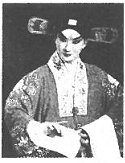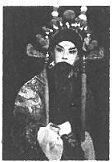Beijing Opera is also called Peking Opera. It came into being after 1790 when the four famous Anhui opera troupes(戏班) came to Beijing. Its music and singing(唱腔) come from Xipi and Erhuang in Hubei and Anhui. Its costumes(服装) are all fascinating and artistic. It is the highest expression of the Chinese culture. It's full of famous stories, beautiful facial paintings and wonderful gestures(姿势) and fights. This kind of opera is very popular with Chinese.
There are four main roles in Beijing Opera:Sheng, Dan, Jing and Chou. Sheng is the leading male role. For example, a Wusheng is a soldier or a fighter. A Xiaosheng is a young man. A Laosheng is an old man. Dan is the leading female role. Jing, mostly male, is the face-painted role and Chou is the comedy actor or the clown.
Stories in Beijing Opera are very interesting. Some of them are from history books, but most of them are from the literature, especially some famous novels. The people in the story usually have some disagreements. They become angry and unhappy. They are sad and lonely. Sometimes they are nervous and worried. Then they find a way to make peace. The stories usually end with happiness and laughter and people are all happy in the end.
 B .
B .  C .
C .  D .
D . 
微信扫码预览、分享更方便